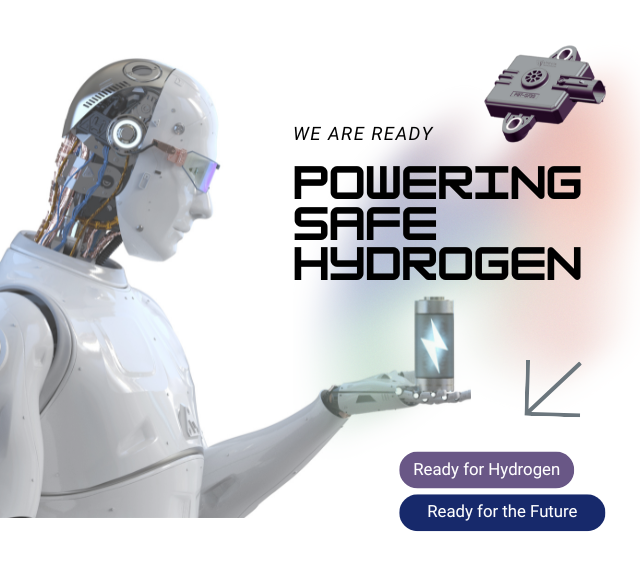Featured Articles
2024-08-09
[2024-08-09 ~
]
Sensors for Detecting Thermal Runaway Becoming More Diversified

However, the signs mentioned above of thermal runaway that may be detectable in advance, including voltage drop, smoke appearance, temperature increase, pressure increase, and visible exhaust, may be too late, leaving the driver with limited time to respond. As far as individual sensors are concerned, pressure sensors can be used to trigger alarms for battery failure, but the slow detection speed is a bigger problem. Using hydrogen sensors has considerable advantages in terms of timeliness and accuracy.
There are rumors that an American car manufacturer has decided to introduce hydrogen sensors into the battery packs of lithium vehicles. Several sensor companies have seen the potential of this market and released such products. Each company has its unique technologies and solutions.
A hydrogen sensor module has been developed and is used for thermal runaway detection in lithium vehicle battery management systems. By monitoring changes in the thermal conductivity of the gas mixture within the battery management system compartment, the hydrogen content in the air can be accurately identified. Due to the different thermal conductivities of hydrogen and air, changes in hydrogen concentration have significant changes in heat transfer in the gas mixture. Relative humidity sensors and air pressure sensors are also built into the hydrogen sensor module, which can offset thermal conductivity fluctuations caused by changes in altitude and air humidity, thereby improving the accuracy of hydrogen concentration measurements.
Sensors that can detect hydrogen and carbon dioxide at the same time have also been developed, and combined with sensors that can monitor the internal pressure, temperature, and relative humidity of the battery pack, a variety of parameters can be obtained to provide comprehensive and accurate monitoring capabilities. However, to accommodate multiple sets of sensing functions, it must have a compact size and flexible design so that it can be easily integrated into various battery pack designs and can be used in stand-alone devices or seamlessly integrated into the battery management system architecture.
Combining hydrogen sensors and carbon monoxide sensors can also be used to monitor thermal runaway. Since carbon monoxide gas has the unique characteristic of quickly absorbing the infrared spectrum at a wavelength of 4.2 microns, it can be detected using non-dispersive infrared spectrum sensing. In addition, using aerosol sensors to detect abnormal levels of particulate matter, coupled with other sensors such as pressure sensors to observe any fluctuations in pressure, can also achieve the effect of monitoring thermal runaway. Using a lithium battery electrolyte trace gas sensor is also one of the solutions.
Sensors for Detecting Thermal Runaway Are Being Developed in Various Ways, but Hydrogen Sensors Are the Most Popular.
Although there are many technologies for detecting thermal runaway, and it has become a trend to use solutions integrating multiple sensors to improve accuracy, no matter what the combination, hydrogen sensors are almost the same intersection. This also means that hydrogen sensors are not limited to use in the hydrogen supply chain but can also be used in the field of lithium battery packs. Since the current technology of lithium battery packs is very mature, the market size is much higher than that of the hydrogen supply chain. However, the hydrogen supply chain has a highly explosive development potential, which makes the industry involved in the development of hydrogen sensors want to do both, and investment in development is quite hot. However, the most prominent feature of these fields is their emphasis on safety and reliability. Only those companies that can meet these high standards will have a chance to gain market share.
Many suppliers claim that they can be used in lithium vehicles to detect thermal runaway sensors, and they all emphasize that the principles and methods they use are sufficient to accurately and timely detect specific gases or pressure changes. However, the vast majority of suppliers fail to mention how the sensors can survive in this hazardous thermal runaway process, with temperatures reaching over 500°C and accompanied by fires and explosions. Due to fierce price competition in lithium electric vehicles and the inability to effectively prevent thermal runaway, the automotive industry will face the most critical challenge of introducing multiple high-performance, high-reliability, and affordable sensors that can withstand extremely high temperatures to detect thermal runaway.
References
- Forbes Technology Council, 2023-08-10, Sarah Martin, How Sensor Technologies Safeguard Electric Vehicles
- Process Safety and Environment Protection Volume 175, 2023-07, Nawei Luy and five others, Hydrogen gas diffusion behavior under fault conditions and detector installation optimization of electric vehicles
- Power Electronic News, 2023-09-27, Stefano Lovati, MEMS Hydrogen Sensor Detects BMS Thermal Runaway




